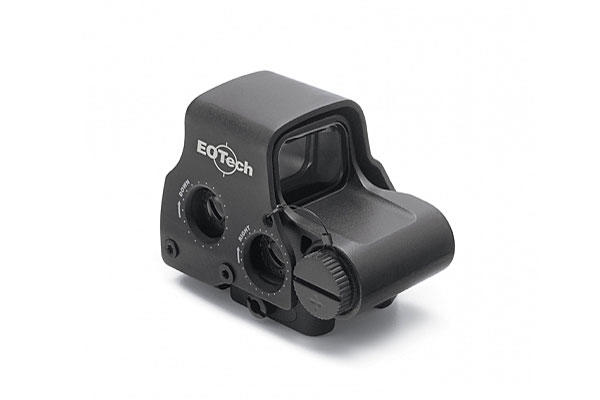The maker of a popular, tactical rifle optic has agreed to pay $25.6 million to settle a lawsuit that accuses the defense firm of knowingly selling the U.S. military and government agencies optics that failed in cold and humid weather conditions.
L-3 Communications Holdings Inc. is the parent company of EOTech, a firm that has supplied thousands of holographic weapons sights to infantry, special operations and other military forces that fought in Iraq and Afghanistan.
Preet Bharara, U.S. attorney for the Southern District of New York, filed a Nov. 24 civil fraud lawsuit alleging that L-3 officials knew that its sights failed to perform as advertised in extreme temperature ranges since 2006.
"Specifically, they learned that the sights experienced a condition referred to as 'thermal drift,' meaning that the sight's point of aim differed from its point of impact (or 'failed to hold zero') when subjected to hot or cold temperature," according to court documents.
"Beginning around 32 degrees Fahrenheit, the sights' aiming dot became significantly distorted, affecting the accuracy of the sight and worsening as the temperature approached -40 degrees. At sub-zero temperatures, the distortion of the aiming dot affected the accuracy of the sights by more than 20 inches for every 100 yards."
The lawsuit alleges that EOTech was contractually required to disclose any information concerning the reliability of the sights, but the company waited nearly a decade to disclose the defect.
L-3 officials have agreed to pay a settlement.
"L-3 and the Government have agreed to settle this matter, under which the Company will pay the sum of $25.6 million to resolve the civil lawsuit, which is pending approval by a judge," according to the statement.
"L-3 cooperated fully throughout this process and is pleased to put this matter behind us. L-3 EOTech is committed to working closely with its customers and continues to improve its holographic weapon sights," it states.
The lawsuit alleges that the FBI independently discovered the thermal drift defect in March 2015 and presented EOTech with "the very same findings that the company had documented internally for years. Shortly thereafter, EOTech finally disclosed the thermal drift defect to DoD."
EOTech represented to the Defense Department that its sights performed in temperatures ranging from -40 degrees to 140 degrees Fahrenheit, and in humid conditions, according to court documents.
Since 2004, EOTech has been paid "tens of millions of dollars primarily through its contracts with DoD to supply combat optical sights," the lawsuit alleges.
Military sales were not only a source of profit for EOTech, but also a powerful marketing tool for the company, the lawsuit alleges.
For instance, EOTech advertised on its website that its Model 553 was "created in conjunction with the U.S. Special Operations Command" and is "designed to be the most rugged and battle-proven holographic weapon sight ever developed."
"It also offers features required by U.S. Special Forces to meet the stringent requirements of our elite fighting forces." EOTech advertises that its Model 552 is "the sight of choice by military units like Stryker Brigade, 10th Mountain, and 3rd Infantry" and that its Model EXPS3 was "chosen by the U.S. Special Operations Command ... as their primary optic for close-quarter engagements."
-- Matthew Cox can be reached at matthew.cox@military.com.































